Apple Watch Ultra looks great and has been a sales hit since its debut. In September, we will most likely see its third iteration, but it's fair to say that the competition isn't sleeping, and there are outdoor and sports watches available on the market that can do more and last longer without needing a charger. If not Apple Watch Ultra (and Ultra 2), then what? Let's find out which sports watch deserves the title of boss of all bosses, and which ones are hot on its heels.
It took eight generations of Apple Watch and SE models along the way for me to finally, watching the presentation of the Cupertino giant (I've said I love that phrase, right?), declare:
Yes, this is the watch I'd like to see on my wrist.
Before, I didn't even glance at Apple watches – neither the design, nor the battery life, nor the features made my heart beat faster. And that's being gentle. To this day, I believe that the basic Apple Watch (and SE models) are simply unremarkable in terms of design. Sure, they stand out from the competition with their case shape, but is that enough? In my opinion, no.
So I was never a big fan of the Apple Watch, maybe because I wasn't a big fan of smartwatches in general. For a long, long time, I coveted Swiss watches, only to spend significantly more than two salaries on one model before I turned thirty. Later in my life came the stage of purely sports watches, which lasted until the premiere of the first Apple Watch Ultra in 2022.
Sports watch vs. smartwatch – then and now
Just a few years ago, it could be said with full responsibility that a sports watch and a smartwatch were two different product categories. These devices differed in virtually everything.
If you took sport rather seriously, a sports watch (or an outdoor sports watch) could seriously assist in planning, recording, and analyzing workouts (and entire plans), while simultaneously monitoring recovery. In short: a sports watch at this less professional level could replace a personal trainer.
Monitoring daily activity and recovery levels, accurate sleep analysis (and not just sleep phases, but also night-time heart rate, breathing frequency, HRV), constant checking of health indicators – at a certain level, it's not just helpful, but essential. Just like a daily orthostatic test first thing in the morning, helping to plan the next training day or introduce corrections. And then there's the battery, which ensures the device works for several good days (full of training!) – that also comes in handy.
Such a multitude of functions vs. peeking at who's calling or just commented on a FB post? Srsly? On the plus side, a nice AMOLED screen with high resolution and a color palette.
The choice seemed simple, but in the end – like in that meme – all sports watch fans still yearned for more pixels…
That was once – not so long ago, in fact.
Over time, sports watches gained more and more smart features, and smartwatches gained more and more health and sports features.
And then came the time when distinguishing a sports watch from a smartwatch could be done roughly like this:
Long battery life? Sports watch.
Nice screen? Smartwatch.
And again, everything got mixed up. But for now, let's go back to the Apple Watch Ultra and Ultra 2.
Why the Apple Watch is a mediocre sports watch


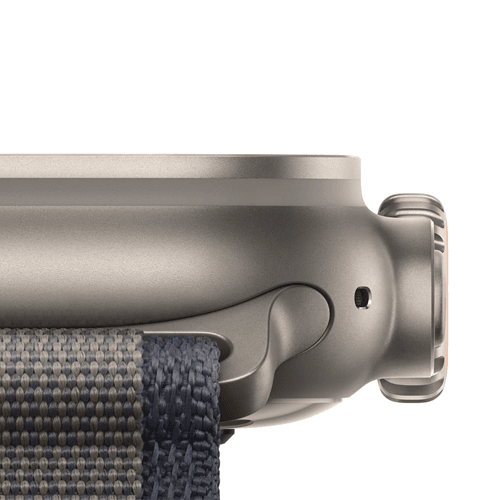
The basic Apple Watch was difficult to take seriously as a sports watch. On one hand, its weak point was always the battery (I know people who have two units; one for day, one for night), and on the other, the amount of data collected during or between training sessions. The lack of a solid tool, especially a desktop version, for analyzing the collected data was always the ultimate argument for me why this Apple family device could not be taken seriously.
Until it arrived: the Apple Watch Ultra, which may not solve all the aforementioned problems, but you can turn a blind eye to them, because in my opinion, it looks great on a man's wrist. And on a woman's too, for that matter. But it's not just about that.
Because the Watch Ultra has additional outdoor features, such as an alarm siren, immersion depth logging, and a large, very clear and bright display that gets the job done. Navigation features? Great!
But again: battery and data. Sure, the Ultra model lasts significantly longer on a single charge than a regular Apple Watch, but it's still not enough. 36 hours? Well… okay. That number might be impressive if we were talking about 36 hours in training mode, with accurate GPS sampling and heart rate measurement, preferably from an additional chest strap, because I still don't have (justified) trust in wrist-based heart rate measurements. And as it is? Well, then.
When it comes to the Apple Watch, what annoys me most is that once you take the watch off your wrist, it stops recording your workout altogether, even if it's connected to a chest strap heart rate monitor. Try snatching a kettlebell in CrossFit or boxing with gloves on your hands…
On the other hand, the Apple watch works phenomenally with an iPhone (and only with an iPhone). So much so that the instructions on how to connect a smartwatch to a phone won't be of use to you this time. Android? Hmm, then we invite you elsewhere… 😉
Not just Apple Watch Ultra. The best sports and outdoor watches
However, there's no need to wait for Cupertino to realize that 36 hours on a single charge isn't enough, and that a user going on an expedition or training needs more than just navigation and a compass.
Alternatives to Apple Watch Ultra and Ultra 2? Here you go. Here are three contenders for the throne.
Best multifunctional sports watch: Garmin Fenix 8
Here is the king of the jungle, including the urban one. The title of this article could essentially be reversed: „If not Fenix 8, then what?”. The Garmin watch is a mighty piece of equipment, the best sports watch with smart features not just in its class, but the best overall. In short: a true flagship.
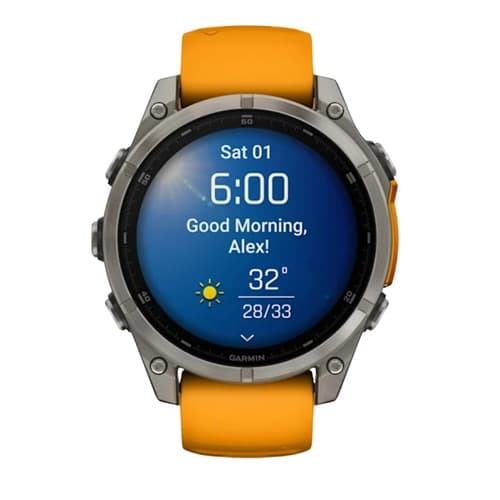
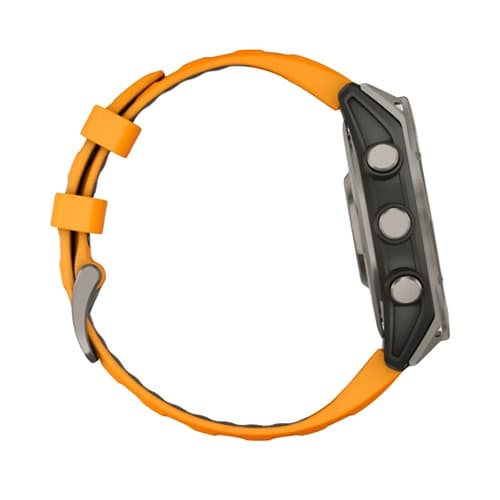
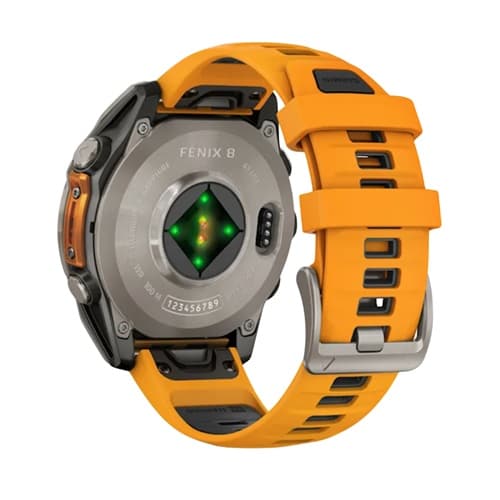
Garmin Fenix 8 – sports watch description
Available in three case sizes (43, 47, and 51 mm), it will fit every wrist, even a more slender one, transforming into a full-fledged women's sports watch (well, almost…).
It has a high-resolution **AMOLED display** (454 x 454 px), but hardcore users who need even longer battery life can opt for a classic MiP (Memory in Pixel) screen. Even longer? Yes, because even with the AMOLED display (wonderful!), the Garmin Fenix 8 in the variant with the largest screen diagonal works for up to 29 days in watch mode, and with all systems turned on, including multi-band GPS, for up to… 62 hours.
I don't know about you, but I've never trained for 62 hours straight.
Such a powerful battery is just the beginning, because the Garmin Fenix 8 is packed with all the features an amateur athlete could think of. First, the hardcore features. Built-in LED flashlight? Yes. Microphone and speaker for calls and voice commands? Present. Water resistance up to 100 m and capable of diving up to 40 m? That's right! Wrist-based heart rate measurement along with blood oxygenation? Correct. Multi-band GPS? Why do I even ask… (With all this, you might even forget about the sapphire glass and titanium casing – in the selected version, of course).
Check out: ESIM is a mobile card just like you!
The Garmin Fenix 8 has a ton of built-in sports profiles, and each one takes the given discipline seriously. It's not like you start, say, surfing, and get the same data as during a rollerblading workout. In this case, the Garmin watch can count time on a wave, glide length, etc. That it also draws a map goes without saying.
Garmin 8 Fenix – sports watch features that impress
This sports watch can assess fitness level, training readiness, monitors daily activity and vitality, has offline maps, and can even create a strength training plan. A true powerhouse. I'm also quite impressed by the recovery time prediction adapted to the body's actual fatigue, and the Morning Report, which is a daily health status report.
Weaknesses of the Garmin Fenix 8 sports watch
Downsides? What downsides? Oh, there's one, a significant one. Lack of LTE connectivity.
Men's watches for athletes? Here's Polar Grit X2 Pro
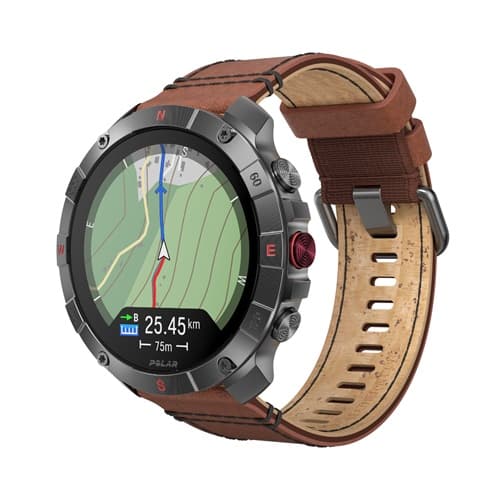
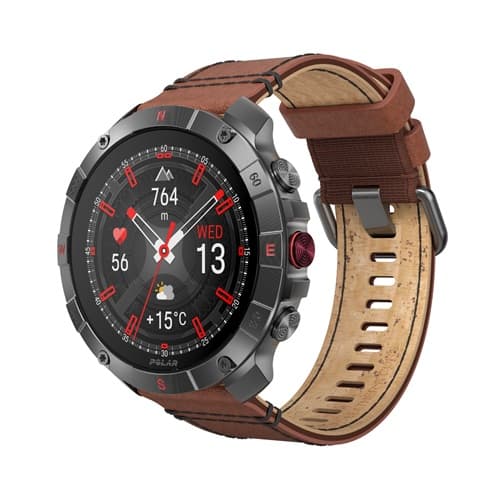
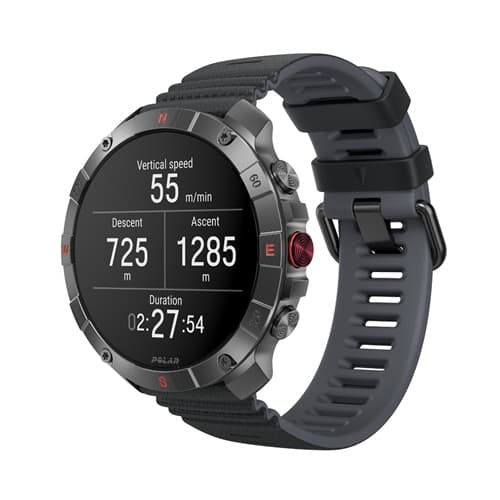
Its predecessor, the **Polar Grit X Pro watch, was one of my favorites mainly because it was excellently priced**. Its successor – the Grit X2 Pro – is „catching up” with the competition in that regard, but can the same be said for its design and features? Here, one might have doubts. Slight, but doubts nonetheless.
The Polar Grit X2 Pro (it's hard to find an X2 model without this suffix – because there isn't one) features a **titanium or steel casing* and sapphire glass**. The screen diagonal is **1.39 inches, and the resolution is 454 x 454 pixels**. In line with this year's trend, the screen is, of course, **AMOLED**.
The watch is **water resistant to 100 m**. It has **dual-band GPS** and topographic **offline maps** (which are uploaded to the watch itself with a hacking and pirating software vibe). It enables turn-by-turn navigation (with the **Komoot** app). Of course, it connects to **Strava**.
*casing, not watch case, because the underside of the case is always a different material for sports watches.
The Polar Grit X2 Pro monitors workouts (over 150 sports profiles), as well as 24/7 activity. It handles sleep tracking very well. The orthostatic test feature is one that advanced athletes will appreciate. As is the running performance test, which can very accurately estimate VO2max – the test itself **is very close to a laboratory one**. The running training program based on heart rate zones is also a nice feature. Thanks to it, preparations for the first official starts can prove much easier.
Polar recently also introduced a general training program feature. This is currently only available in the Flow app for Android, so I haven't had a chance to test it.
Polar Flow is a great app
Right, Polar Flow. In all the years I've been using sports watches, I haven't come across a better service. Polar Flow works well as an app, but it truly excels in its desktop version. If, as a user, you need to not only analyze data but also compare different periods, plan training cycles and macrocycles – Polar is for you.
Of course, the Polar Grit X2 Pro also has a built-in heart rate sensor with blood oxygen saturation, and also allows for ECG measurements. On a single charge, it works for up to 43 hours in continuous training mode with dual-band GPS and wrist-based heart rate measurement. In smartwatch mode, it can last up to 10 days. These are also impressive numbers.
Weaknesses of the Polar Grit X2 Pro sports watch
- Also, no LTE connectivity;
- and no option to pay with the watch.
- No ability to upload music (you can only control music from your phone).
- The multitude of sports profiles doesn't necessarily correspond to their quality.
Coros Vertix 2S is a sports watch for tough guys
Coros is a brand a bit less recognizable than Garmin, Polar, or Suunto, and certainly less than Apple or Samsung. However, this brand's model, the Vertix 2S, is a phenomenal piece of equipment that can withstand the toughest conditions. This is a watch that not only keeps up with the competition but often leaves it far behind. Coros entered the market on its own terms and treads its own path. While in Poland it's known mostly to a (growing, yet still) circle of enthusiasts, abroad it's already a full-fledged champion.
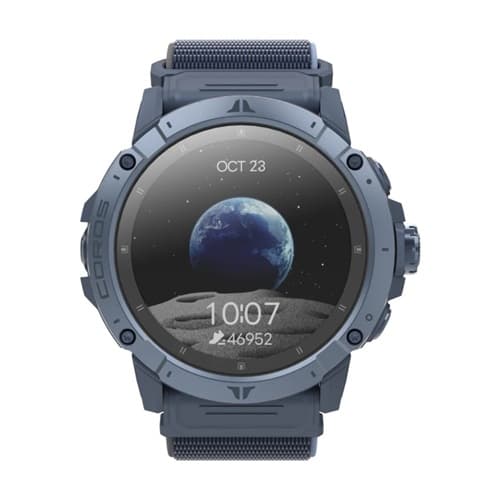
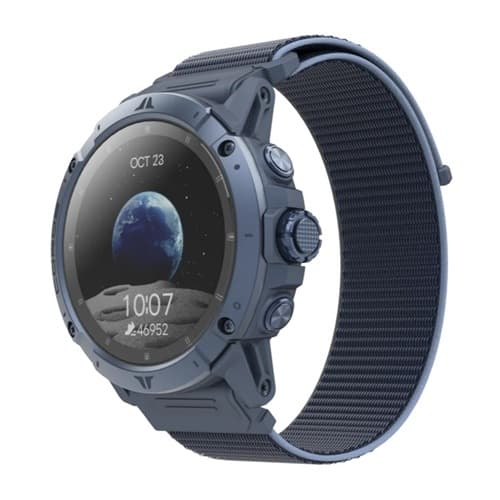
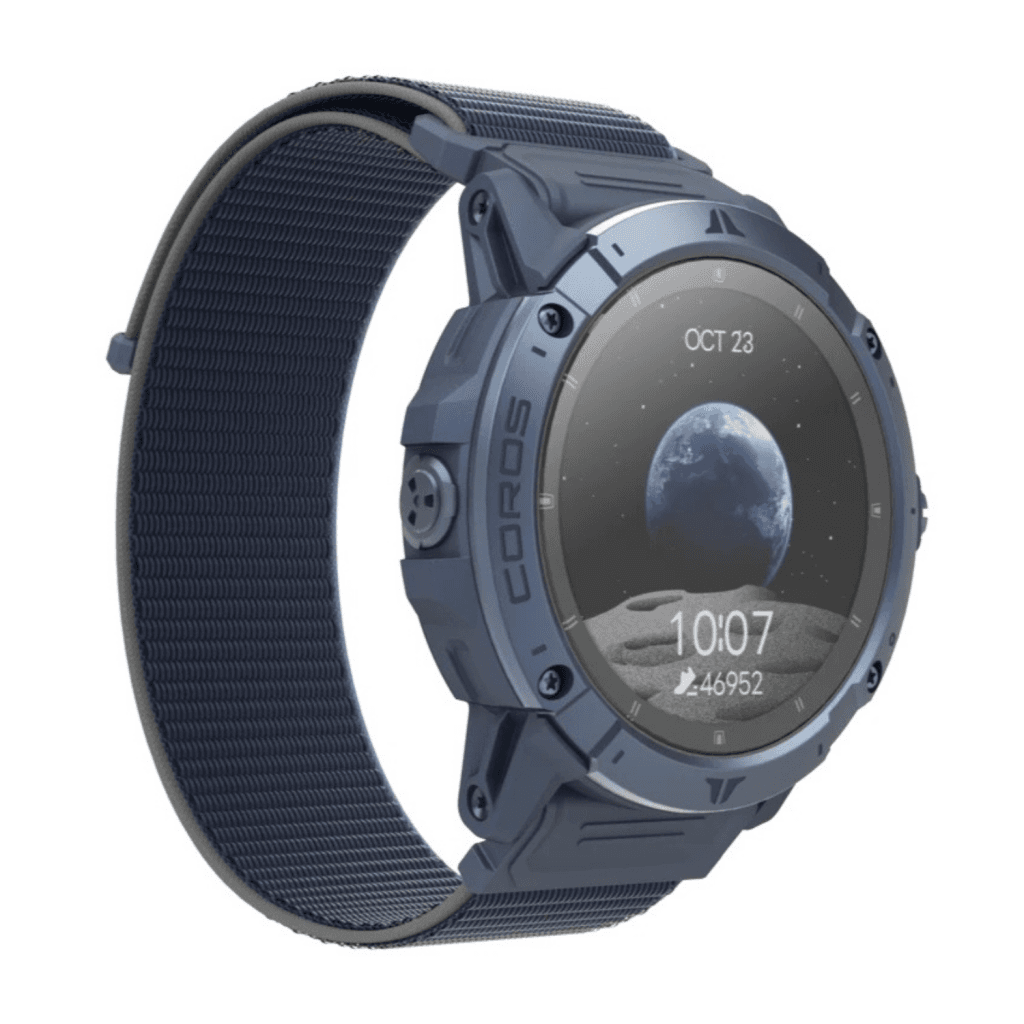
The **Coros Vertix 2S has a large 1.4-inch display**. It is also the only watch in the lineup that hasn't followed the AMOLED trend. Here, we find a **Memory LCD screen with a resolution of 280 x 280 pixels**. The casing is **Grade 5 titanium** (in every variant), and the **glass** is scratch-resistant **sapphire**.
The Coros Vertix 2S is **water resistant to 100m**. It operates with **dual-band GPS**. It features built-in **landscape and topographical maps** along with excellent trail navigation. In line with current standards, it has a built-in **heart rate sensor with a pulse oximeter** (blood oxygenation), and also allows for **ECG measurements**.
The **altitude mode with regular assessment of blood oxygen levels** and high-altitude fitness works great.
In watch mode, the Coros Vertix 2S lasts **up to 40 days**. In the most resource-demanding scenario, it manages **up to 43 hours**.
Downsides? Let's say similar to those of the Polar Grit X2 Pro. But look at how it looks!
The ideal sports watch? We're almost there
Choosing the best sports watch today is not so much a matter of brand as it is of the user's real needs. The Apple Watch Ultra and Ultra 2 are great smartwatches with sporting ambitions. Good for everyday use, integrated with the Apple ecosystem, but still too limited for people training in more demanding conditions.
Meanwhile, the Garmin Fenix 8, Polar Grit X2 Pro, and Coros Vertix 2S are devices designed for active people. Their training features, measurement accuracy, and battery life significantly surpass what Apple offers.
Is any of them ideal? Not yet. Each has its limitations – no LTE, no payment options, or no offline music playback. But the good news is: we are very close. And growing competition only works in our favor.
And a pro tip from Viking Piotr at the end
Nothing prevents you from using an Apple Watch Ultra 2 daily and putting on a Polar Grit X2 Pro for training… The author of these words does just that.
Opening photo: Apple press materials.







